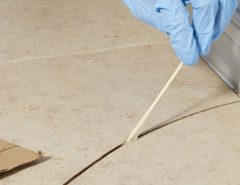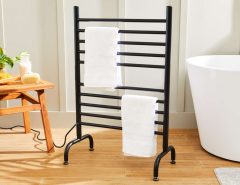If you’ve ever tried to use your bathtub faucet and found that it wasn’t working correctly, you probably had a problem with the diverter. Learn how to fix this common household plumbing issue below!
What is a Bathtub Faucet Diverter?
A bathtub faucet diverter is a device that helps prevent water from flowing backwards out of the tub while you are taking a bath. The diverter can become clogged with deposits, causing the water to stop flowing and wasting water. If your bathtub diverter is not functioning properly, here are some quick fixes to help get it working smoothly again. You can cut grass with scissors.
How do I fix a Bathtub Faucet Diverter?
If you are having trouble using your bathtub faucet and the Diverter is not opening and closing properly, there is a simple fix. You can replace the diverter with a new one. Here are the steps:
1. Remove the old diverter by unscrewing the screws that hold it in place. Once it is loose, pull it out of the bathtub spout.
2. Install the new diverter by screwing it into place on the spout. Be sure to tighten the screws to ensure that it is secure.
3. Reattach the hose to the diverter by threading it through the hole on top and then screwing it onto the screw on the bottom.
4. Replace the screws that were removed in step 1 and re-attach them to the sides of the bathtub enclosure.
What are the Causes of a Bathtub Faucet Diverter Problem?
A bathtub faucet diverter can become stuck or faulty, leading to a less-than-ideal bathing experience. Here are the top five causes of bathtub faucet diverter problems:
1. Dirty Diverter: If the diverter is not cleaned on a regular basis, mineral buildup can cause it to become stuck or difficult to operate. Clean with a soft, non-abrasive cloth and water.
2. Bent Plumbing: A bent or kinked pipe can also cause the diverter to become stuck or faulty. Place a padded plumber’s snake around the pipe to see if it moves freely. If not, have a professional plumber fix the issue.
3. Foul Water: If the water in your bathtub tastes bad or has no bubbles, it might be because of bacteria buildup. To cleanse your bathtub, fill it with fresh water and add some vinegar or baking soda (to make a paste). Swish it around and let it sit for 30 minutes before using.
4. No Water Flow: If you cannot get the flow of water from your bathroom faucet even when you turn
Replace a tub diverter spout
If your bathtub spout is old, corroded, or just doesn’t work very well, it’s time to replace it. Follow these steps to replace the diverter spout:
1. Turn off the water supply to the faucet. If there is a shut-off valve on the supply line, turn it off.
2. Remove the faucet spray head by unscrewing the three screws that hold it in place.
3. Remove the old diverter by unscrewing the four screws that hold it in place.
4. Replace the old diverter with a new one by screwing it in place using the four screws that were removed from the old diverter. Tighten these screws only enough to keep the diverter in position; do not over-tighten them.
5. reconnect the spray head and screws by reversing Steps 2-3. Turn on the water supply to the faucet and test for proper function before replacing any parts that may have been damaged during removal or installation .
6. Reconnect the hose to the spray head and turn on the water supply to the faucet again.
7. The faucet is now ready for use. Call your local plumbing supply store if further assistance is needed.
Faucets and Pull Out Sprayer Location: Most faucets have a pull out sprayer located at the center of the faucet where it connects to the sink. If your faucet isn’t equipped with a pull out sprayer, you can attach a spray head to the spout of the faucet and then connect a hose between the two. You’ll need to adjust the water pressure to 3-4 pounds for this type of installation. Have a look at the fruit decoration ideas.
Conclusion
Over time, the plastic diverter can become brittle and crack, which can lead to leaks. To fix a bathtub faucet with an old diverter, first remove the existing diverter by unscrewing the handle or removing the screws that hold it in place. Next, cut off the old diverter with a sharp knife so that only about 1/2 inch of plastic is left on both sides of the stem. Finally, screw on the new Diverter by threading it onto the stem and tightening it using a wrench or pliers. Be sure to test fit your new Diverter before you do anything else to avoid making any further repairs!




